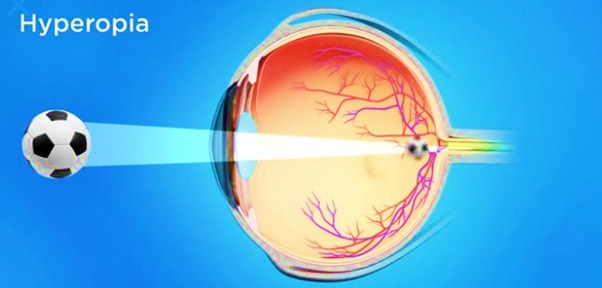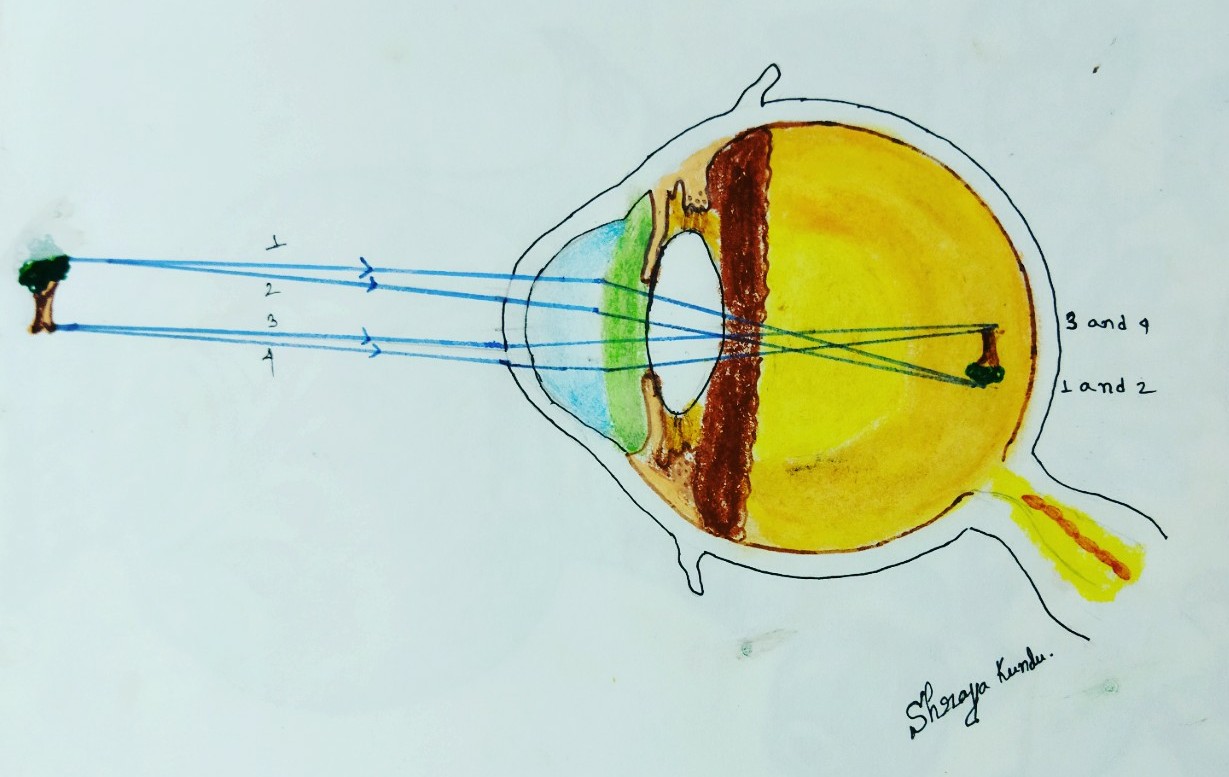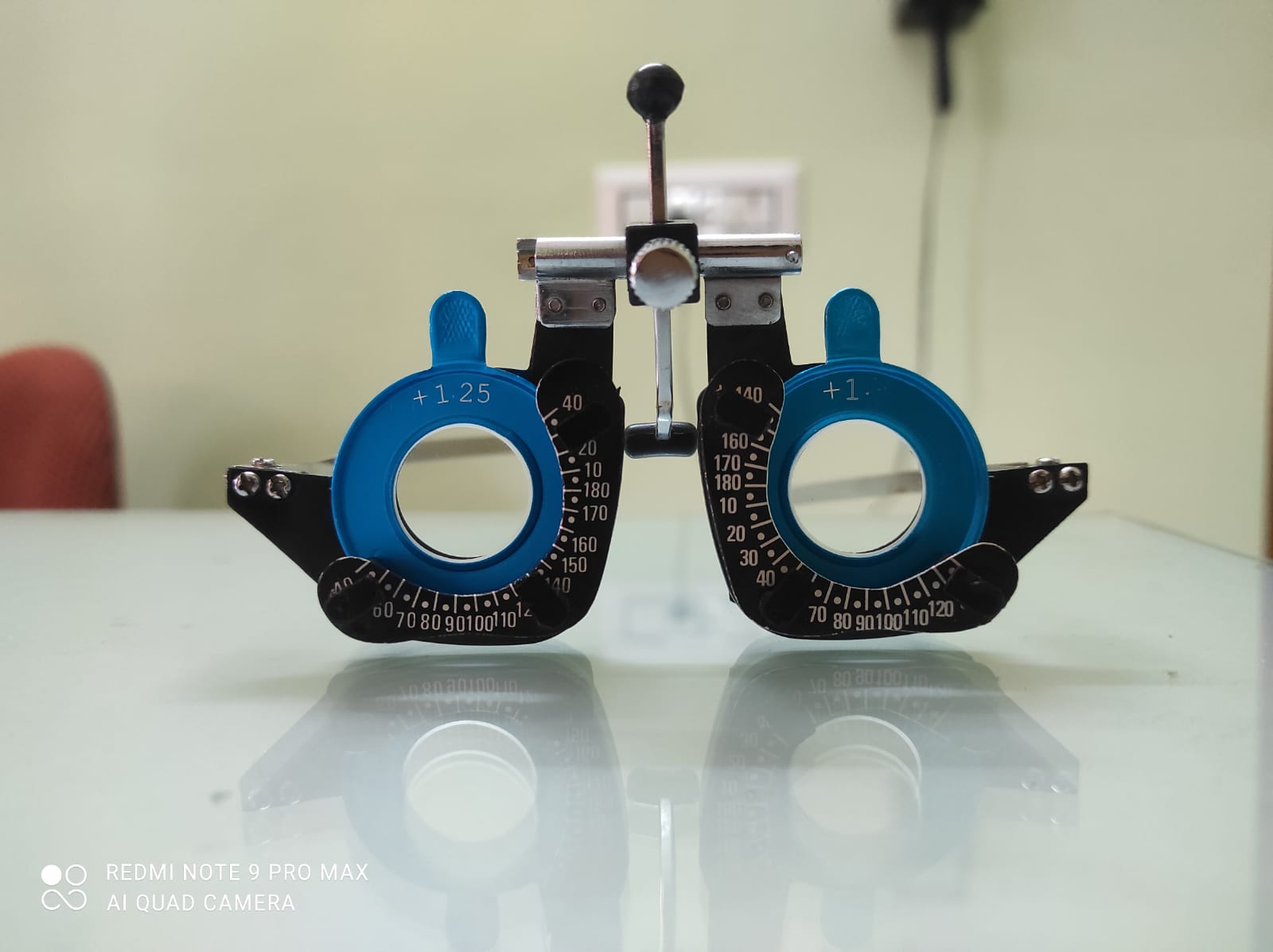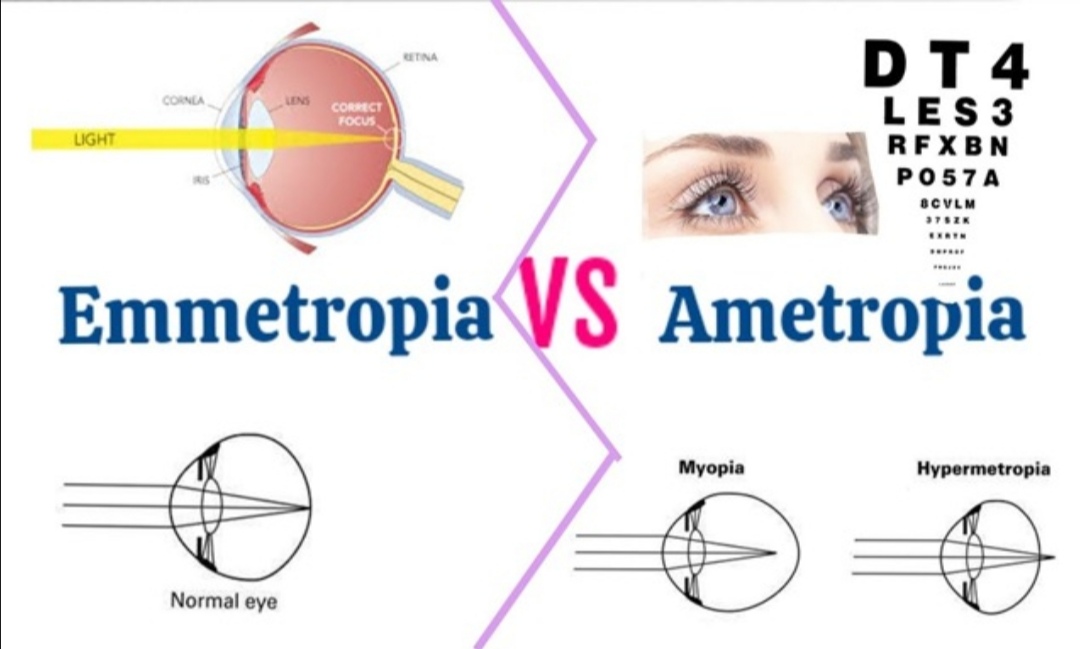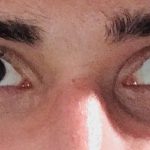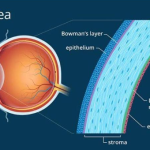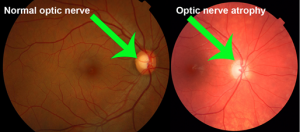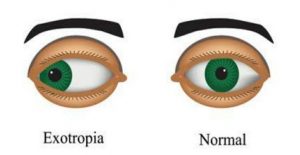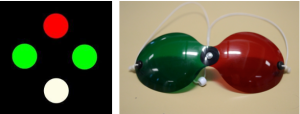Hypermetropia or hyperopia is the refractive condition of the eye wherein either the total refractive power of the eye or the length of the eyeball is diminished and the rays of light are not focused on the retina but behind it until and unless extra accommodative effort is made. The posterior principal focus of the refractive system of the eye is located posterior to the retinal plane. It may be stated that in hypermetropia the retina is situated in front of the posterior principal focus of the dioptric system of the eye. By the voluntary effort of an individual, it is possible to increase the refractive power of the eye and focus the rays on the retina. This voluntary effort of accommodation puts considerable strain on the ciliary muscles of the eye leading to ocular symptoms indicating the presence of this refractive state.
In recent years axial alteration as a cause of refractive errors in a significant number of cases is being doubted. This is particularly so in the case of hypermetropia. Hypermetropia is by far the commonest refractive error.
By birth, human beings are predominantly hyperopic, and as the progresses, hyperopic eyeballs grow to become emmetropic or even myopic. Positive family history plays a crucial role in the development of hyperopia in the next generations. If left untreated after diagnosis, sequelae such as amblyopia and tropia may develop.
OPTICAL CONDITION:
- Parallel rays focus behind retina
- Diffusion circles produce blurred & indistinct images
- Retina is nearer to nodal point
- Image is smaller than in emmetropic
- Rays diverge from retina
- Formation of clear image is possible only when converging power of eye is increased.
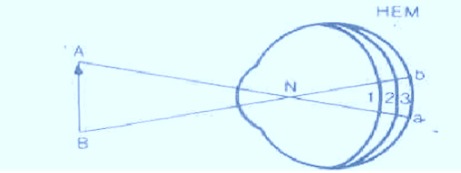
Fig2: The relative sizes of the image in hypermetropia, emmetropia and myopia. AB is the object and N is the nodal point of the eye. The image ab is obtained by drawing straight lines from A and B through N to the retina. Since the retina in the hypermetropic eye (H) is nearer to N, and in the myopic eye (M) is further away than in the emmetropic eye (E), it follows that the image of the first (1) is smaller and that of the second (3) is larger than the image in the emmetropic eye (2).
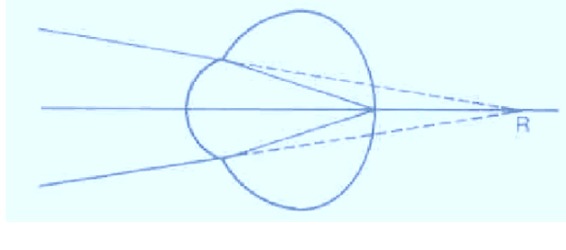
Fig3: The emergent rays in hypermetropia. Rays coming from a point on the retina are divergent and appear to come from a point (R) behind the eye.
OPTICS OF HYPEROPIA: Hyperopia (i.e. farsightedness) is much less common than myopia or emmetropia. It is typically in the +1.00 to +4.00 diopter range, rarely it can be as high as +8.00 diopters.
Hyperopia In contrast to myopia, hyperopia occurs when the eye is too short for the power of its optical components. In hyperopia, the cornea is not steep enough and light rays hit the retina before they come into focus. In the picture above the light rays are shown to focus behind the eye (arrow). Distant objects appear blurred, and nearby objects are even more fuzzy. Most farsighted individuals need corrective eyewear to see clearly at all distances.
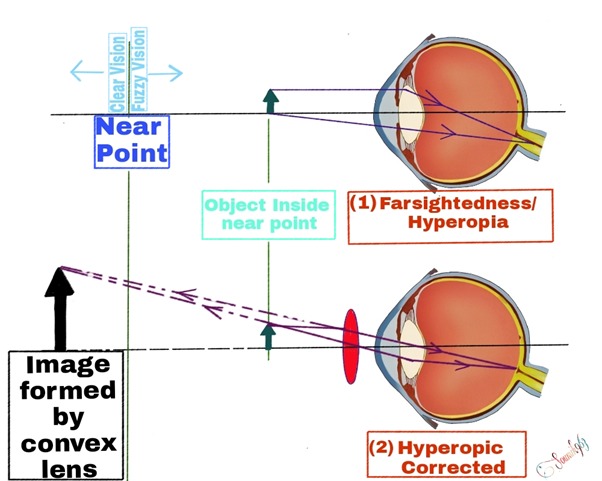
- Spectacle Correction: Correction of hyperopia requires a lens which is convex (i.e. thicker in the middle than the edges). This acts as a magnifier, and causes objects to appear bigger by 2% per diopter. For this reason hyperopes while wearing their spectacle correction, appear to have “big” eyes. Optical aberrations and decreased peripheral vision occur are likely to occur with large amounts of hyperopia.
- Contact Lens Correction: Contact lens correction reduces the optical problems that plague spectacle lenses, but they have their own unique problems including high-maintenance care solutions, corneal warpage, corneal suffocation, corneal infections, and eyelid allergies.
The cure for the farsighted eye centers around assisting the lens in refracting the light. Since the lens can no longer assume the convex and highly curved shape that is required to view nearby objects, it needs some help. Thus, the farsighted eye is assisted by the use of a converging lens. This converging lens will refract light before it enters the eye and subsequently decreases the image distance. By beginning the refraction process prior to light reaching the eye, the image of nearby objects is once again focused upon the retinal surface.
While farsightedness most often occurs among adults, occasionally younger people will suffer from this vision defect. When farsightedness occurs among youth, the cause is seldom related to the inability of the lens to assume a short focal length. In this case, the problem is more closely related to an eyeball that is shortened. Because the eyeball is shortened, the retina lies closer than usual to the cornea and lens. As a result, the image of nearby objects is formed beyond the retina. The traditional correction for such a problem is the same as for adults – the use of a converging lens.

